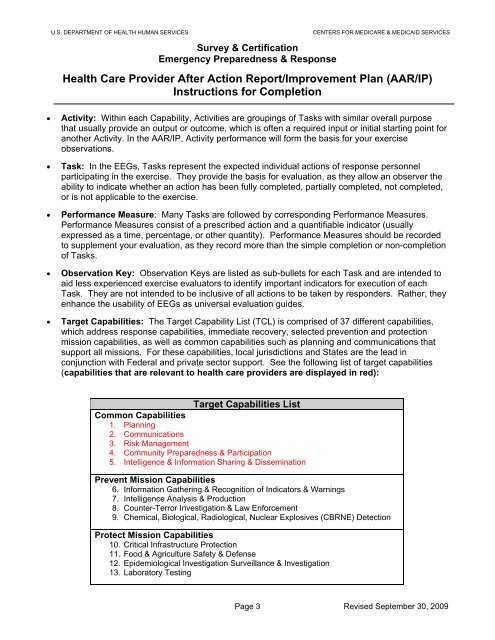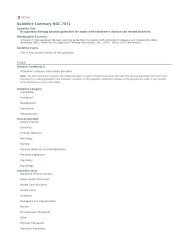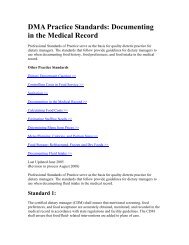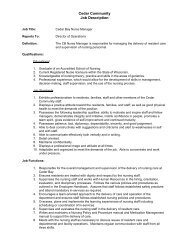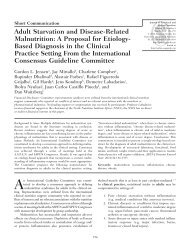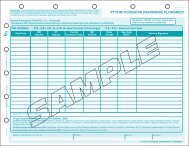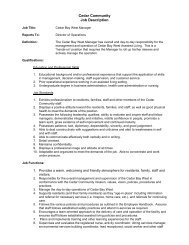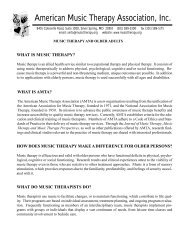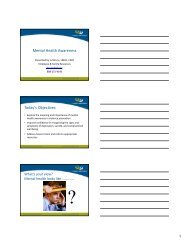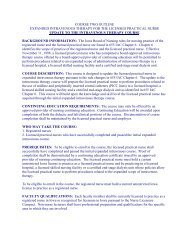Health Care Provider After Action Report/Improvement Plan (AAR/IP ...
Health Care Provider After Action Report/Improvement Plan (AAR/IP ...
Health Care Provider After Action Report/Improvement Plan (AAR/IP ...
You also want an ePaper? Increase the reach of your titles
YUMPU automatically turns print PDFs into web optimized ePapers that Google loves.
U.S. DEPARTMENT OF HEALTH HUMAN SERVICESSurvey & CertificationEmergency Preparedness & ResponseCENTERS FOR MEDICARE & MEDICAID SERVICES<strong>Health</strong> <strong>Care</strong> <strong>Provider</strong> <strong>After</strong> <strong>Action</strong> <strong>Report</strong>/<strong>Improvement</strong> <strong>Plan</strong> (<strong>AAR</strong>/<strong>IP</strong>)Instructions for CompletionActivity: Within each Capability, Activities are groupings of Tasks with similar overall purposethat usually provide an output or outcome, which is often a required input or initial starting point foranother Activity. In the <strong>AAR</strong>/<strong>IP</strong>, Activity performance will form the basis for your exerciseobservations.Task: In the EEGs, Tasks represent the expected individual actions of response personnelparticipating in the exercise. They provide the basis for evaluation, as they allow an observer theability to indicate whether an action has been fully completed, partially completed, not completed,or is not applicable to the exercise.Performance Measure: Many Tasks are followed by corresponding Performance Measures.Performance Measures consist of a prescribed action and a quantifiable indicator (usuallyexpressed as a time, percentage, or other quantity). Performance Measures should be recordedto supplement your evaluation, as they record more than the simple completion or non-completionof Tasks.Observation Key: Observation Keys are listed as sub-bullets for each Task and are intended toaid less experienced exercise evaluators to identify important indicators for execution of eachTask. They are not intended to be inclusive of all actions to be taken by responders. Rather, theyenhance the usability of EEGs as universal evaluation guides.Target Capabilities: The Target Capability List (TCL) is comprised of 37 different capabilities,which address response capabilities, immediate recovery, selected prevention and protectionmission capabilities, as well as common capabilities such as planning and communications thatsupport all missions. For these capabilities, local jurisdictions and States are the lead inconjunction with Federal and private sector support. See the following list of target capabilities(capabilities that are relevant to health care providers are displayed in red):Target Capabilities ListCommon Capabilities1. <strong>Plan</strong>ning2. Communications3. Risk Management4. Community Preparedness & Participation5. Intelligence & Information Sharing & DisseminationPrevent Mission Capabilities6. Information Gathering & Recognition of Indicators & Warnings7. Intelligence Analysis & Production8. Counter-Terror Investigation & Law Enforcement9. Chemical, Biological, Radiological, Nuclear Explosives (CBRNE) DetectionProtect Mission Capabilities10. Critical Infrastructure Protection11. Food & Agriculture Safety & Defense12. Epidemiological Investigation Surveillance & Investigation13. Laboratory TestingPage 3Revised September 30, 2009


